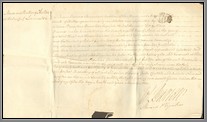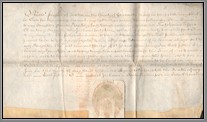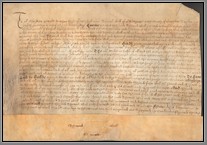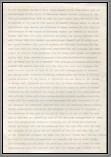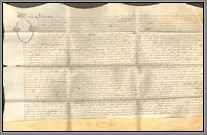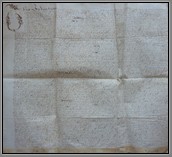Presented here is a small collection of English legal manuscripts written on velum, dated 1643 to 1787. They provide an insight into cursive writing as it existed over 350 years ago. What is interesting about these documents is that they are all scalloped at top. This was a precaution done to prevent forgeries. The solicitor would make two copies of the manuscript, then place them on top of each other and cut the top margin. One copy would be given to the owner and the other kept by the solicitor. Anyone claiming to hold a true copy would then be tested by the solicitor who would line up his true copy against the claimants. If the later did not fit, it was deemed a forgery.
The other interesting point is that in ancient times important documents bore a wax seal to confirm their validity. However, not every document was important enough to be sealed. The way to know if the document was not sealed or the seal had been removed, was by the author signing “sin cera” at the bottom, meaning “without wax”. This tradition has come down to us through the ages and is the reason why we end correspondence with “sincerely yours”.

